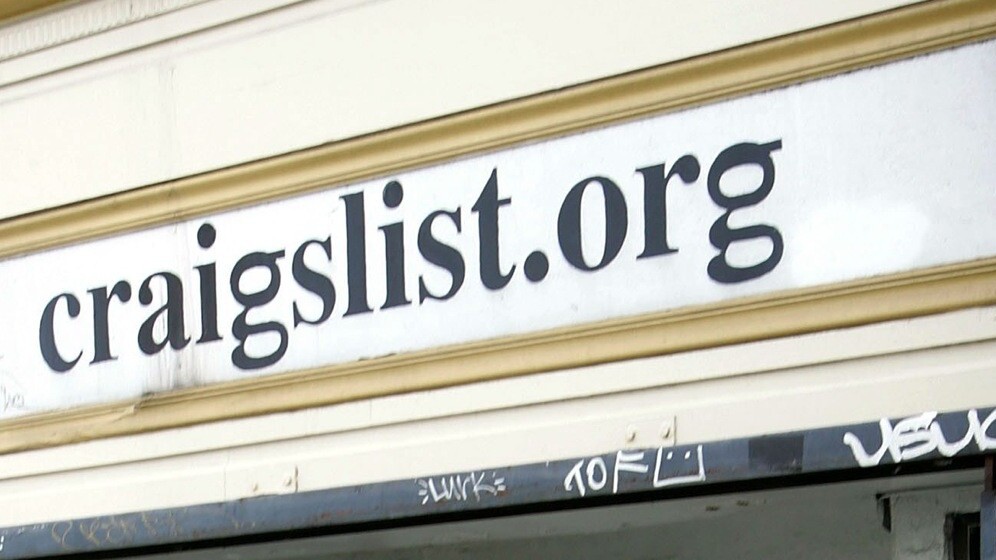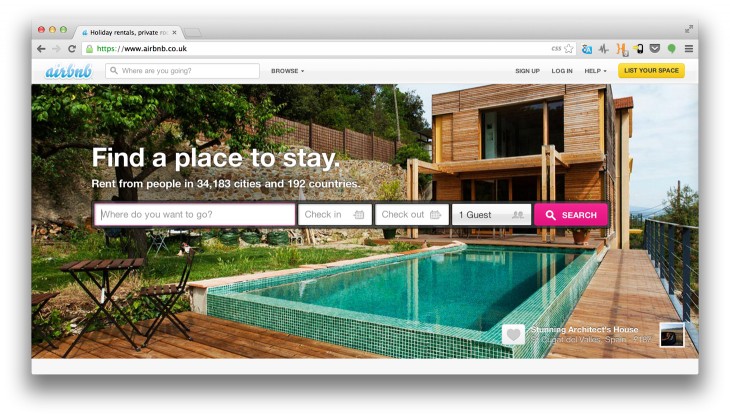
Editor’s note: This is a guest post by Sangeet Paul Choudary, who analyzes business models for internet startups at his blog Platformed.info. You can follow Sangeet on Twitter at @sanguit.
Craigslist, that ugly set of electric-blue links that still stands around like an exhibit from the museum of early web design. Poor design and a general lack of features haven’t come in the way of the site’s popularity. Not only is the site an eyesore, it’s a regular destination for scammers and spammers, alike.
How does an ugly, stuck-in-the-nineties product continue to enjoy success in an industry where design and user experience are so important?
Three factors governing platform adoption
Craigslist is a platform that connects buyers and service seekers with sellers and service providers. Platforms that connect two or more diverse groups have no value for users without a critical mass of users using it. Beyond the critical mass, the platform gains strength on account of network effects becoming more useful as more users use it.
The success of such platforms depends on the following three factors:
- The network effect: The single most important factor for a platform is its ability to build the network effect. Without a minimum number of buyers and sellers, platforms simply aren’t valuable enough. With network effects, a winner-takes-all dynamic sets in and the platform continues to grow on the strength of its network effect.
- Curation of content: The platform should have a mechanism for separating signal from noise. Platforms that encourage user-generated content often have an abundance of content and users need a mechanism, like search or personalized news feeds, to sift through the noise.
- Curation of participants: Platforms may need to have a mechanism for determining reputation of participants. This is especially true for transactions that may involve the risk of fraud.
Being largely free (no transaction cut, no subscription cost for most categories) and on account of having started in the early years of the web, Craigslist has built tremendous network effects.
While many believe that technology makes or breaks an internet business, Craigslist clearly demonstrates that platforms win through the value that the community creates.
But doesn’t the UI suck?
A platform connecting buyers to sellers, like Craigslist, tends to be extremely transactional in nature. Users use Craigslist to get a very specific job done. Content-intensive platforms like YouTube or Pinterest, or social networks like Facebook are engagement-intensive and need a good user experience to engage users long enough.
A poor user experience can often spell failure. In contrast, Craigslist is a platform that is focused on helping buyers find sellers. And as long as there are more buyers and sellers on board than on competitors, users continue to find value, despite the ugly interface.
Essentially, Craigslist is unlikely to be disrupted purely on the strength of a cleaner UI, better features and superior technology.

So why is Craigslist so paranoid about protecting its data?
Craigslist has played villain with the startup community in recent times, mercilessly doling out cease-and-desist letters to any startup attempting to build a better transaction experience leveraging its data.
If Craigslist’s network effects are so strong, and a competitor with better features and design isn’t reason enough for users to switch, why has it been so paranoid about other emerging platforms leveraging its data and content? Network effects, after all, would prevent users from moving to a new platform en masse, in spite of better features.
Achilles heel: When trust trumps liquidity
To answer this question, let’s revisit the three parameters mentioned above. Craigslist scores very high on liquidity and network effects. It could definitely improve its signal to noise ratio by curtailing spam but that is less of a product design problem and more a curation problem. The platform has been taking some measures towards that by curbing sexually explicit listings and cutting spam in some categories by making them subscription-based.
However, Craigslist’s real weakness lies in the third parameter: Trust. Marketplaces are built on trust and thrive on trust. Transactions require participants to trust each other. Parents looking for a babysitter need a mechanism to ascertain their credibility. Hosts need to know that travelers camping at their home are reliable, and vice versa.
Craigslist, the king of liquidity, ironically, doesn’t have a reliable method of determining a user’s reputation. While this may be acceptable for certain categories (e.g. selling low-value goods), it can be an important decision criterion for categories with high risk (e.g. babysitters, dating, apartment sharing) or high ticket investment (e.g. trading used high-end goods).
Trust has been a thorn in the flesh for Craigslist. People have lost their lives while engaging in Craigslist transactions. While con artists abound, asking buyers to part with their credit card numbers, a more widespread problem lies in the fact that users cannot build reputation on the platform over time. Hence, the platform does little to aid a buyer’s decision making.
So why doesn’t Craigslist set up a reputation system?
Craigslist is a horizontal platform, a one-stop source for listings across categories. Trust and reputation are very contextual. The parameters worth considering when sharing a lawn mower are very different from the parameters considered when hiring a babysitter. Craigslist, arguably, may not have high activity per category outside the top few verticals so a category-specific trust system may work only for a few categories. A horizontal reputation system, on the other hand, while feasible, wouldn’t be very useful because of the contextual nature of trust.
Trust and reliability are key factors in online platforms gaining widespread mainstream adoption for high risk verticals.
Too many Airbnbs spoil the party
Craigslist understands the importance of online reputation in transactions. Its paranoia stems from a constant threat from other networks, which may provide better trust and curation mechanisms. These competitors can leverage its community and content to build network effects of their own, while adding the security and trust layer to gain larger adoption.
Airbnb famously allowed hosts to post their listings to Craigslist and directed travelers back to Airbnb for the transaction. Additionally, Airbnb also lured sellers on Craigslist to list on Airbnb, offering a better transaction experience.

Emerging networks often piggyback on the activity on established networks to gain traction. PayPal grew on top of eBay, YouTube grew on top of Myspace and Flickr gained initial traction on the blogosphere. Airbnb effectively piggybacked Craigslist’s network to build its own.
More importantly, Airbnb has built a strong reputation system to build a worldwide community of travelers and hosts. It allows both parties to rate each other and has focused on building a huge corpus of reviews. Additionally, it offers verification services to verify hosts where a photographer visits the actual listing and takes representative photographs.
A brief guide to the end of Craigslist
Craigslist’s paranoia and crackdown are understandable. Airbnb has effectively created a playbook of sorts to build a marketplace with network effects. Here’s how that reads:
- Use Craigslist’s network to build liquidity and
- Build a reputation system contextual to your vertical
The combination of liquidity and vertical-specific reputation offers greater value than a horizontal platform.
Zaarly, Swappel, Krrb and many others have used these strategies to get traction on their own network.
If an emerging platform can own a category with the effectiveness that Airbnb has, it is potentially creating a dent in Craigslist’s user base, and a very small dent in its network effect. Craigslist understands that ten startups repeating this feat in ten different categories could potentially create a dent sizable enough to weaken Craigslist’s network effects entirely.
As we’ve seen with Friendster, Myspace and Digg, when users start leaving a network, a feedback loop sets in that creates increasing loss of users. Getting enough users away from the platform may potentially dethrone the currently invincible Craigslist.
Conclusion
Craigslist is justifiably paranoid about competitors leveraging its own liquidity to compete against it. Whether it can legally claim rights over user-generated content is open to debate. But the fact that Craigslist doesn’t own reputation systems of its own is a key opportunity for competing marketplaces.
Header image credit: Getty Images
Get the TNW newsletter
Get the most important tech news in your inbox each week.




